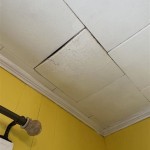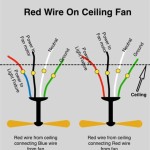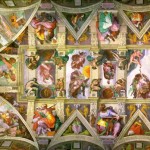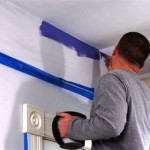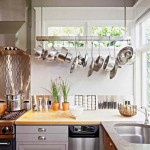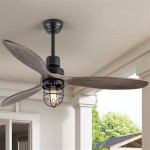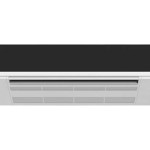Windmill Ceiling Fans With Light: A Comprehensive Overview
Windmill ceiling fans with light fixtures represent a popular choice for homeowners and interior designers seeking a blend of rustic aesthetics and functional illumination. These fans, distinguished by their multi-blade design reminiscent of traditional windmills, often feature integrated light kits to provide both air circulation and ambient lighting. This article provides a comprehensive overview of windmill ceiling fans with light, outlining their design characteristics, benefits, installation considerations, and factors to consider when selecting the appropriate model.
These fans are typically characterized by a large number of blades, often ranging from eight to twenty, arranged in a circular pattern to maximize air movement. The blade materials can vary and may include wood, metal, or composites, each contributing to the overall aesthetic and performance of the fan. The light fixtures range from single downlights to multi-light systems, often utilizing LED technology for energy efficiency and longevity. The combination of the intricate blade design and integrated lighting makes windmill ceiling fans a focal point in any room.
Aesthetic Appeal and Design Versatility
The defining characteristic of windmill ceiling fans with light is their distinctive aesthetic. They evoke a sense of farmhouse charm and rustic elegance, making them suitable for a variety of interior design styles. The exposed hardware, substantial blade spans, and robust construction contribute to their visual impact. The range of available finishes, from brushed nickel and oil-rubbed bronze to matte black and antique white, allows for seamless integration into diverse color palettes and design themes.
These fans often feature intricate detailing on the motor housing and blade arms, further enhancing their visual appeal. The light fixtures are typically designed to complement the overall aesthetic of the fan, with options ranging from simple glass shades to more elaborate cage designs. The ability to customize the fan with different blade materials, finishes, and light fixture styles allows homeowners to tailor the fixture to their specific preferences and the unique character of their space. The substantial size of most windmill ceiling fans makes them particularly well-suited for larger rooms, where their visual presence can be fully appreciated. They also add a unique touch to dining rooms, great rooms, open concept kitchens if the space is fit to accommodate the fan's size.
The availability of remote controls and wall-mounted control panels allows for convenient operation of both the fan speed and light intensity. Some models even incorporate smart home integration, enabling control via smartphone apps or voice assistants. This level of control enhances the user experience and allows for personalized comfort settings.
Functional Advantages and Performance
Beyond their aesthetic appeal, windmill ceiling fans with light offer several functional advantages. The multi-blade design is engineered to move a significant volume of air, providing effective cooling in the summer and promoting efficient heat distribution in the winter. The integrated light fixture eliminates the need for a separate overhead light, simplifying the lighting layout and reducing the number of electrical connections required. This combined functionality makes windmill ceiling fans a practical and efficient choice for homeowners.
The use of energy-efficient LED lighting is a key benefit of many modern windmill ceiling fans with light. LED bulbs consume significantly less energy than traditional incandescent or halogen bulbs, resulting in lower electricity bills and reduced environmental impact. LED bulbs also have a much longer lifespan, reducing the frequency of bulb replacements. The availability of dimming capabilities allows for control over the light intensity, creating a customized ambiance and further conserving energy.
The efficient air circulation promoted by windmill ceiling fans can also contribute to energy savings by reducing the reliance on air conditioning and heating systems. By circulating air, these fans help to maintain a more consistent temperature throughout the room, reducing temperature stratification and improving overall comfort. In the summer, the downward airflow creates a cooling breeze, while in the winter, reversing the fan direction helps to push warm air down from the ceiling, reducing heating costs.
The size and design of the fan blades are directly related to the efficiency of the fan. Larger blades, with a greater surface area, will move more air at lower speeds, resulting in quieter operation and reduced energy consumption. The pitch of the blades also plays a significant role in air movement. A steeper blade pitch will move more air, but it may also generate more noise. Therefore, it is important to choose a fan with a blade design that is optimized for both air movement and noise reduction.
Installation Considerations and Safety
Installing a windmill ceiling fan with light requires careful planning and attention to safety. Due to the size and weight of these fans, it is essential to ensure that the ceiling junction box is properly rated and securely mounted to the ceiling joists. It is recommended to use a junction box specifically designed for ceiling fans, which can support the weight and vibrations of the fan.
The installation process typically involves mounting the fan bracket to the junction box, wiring the fan motor and light fixture to the electrical supply, and attaching the blades to the motor housing. It is important to follow the manufacturer's instructions carefully and to ensure that all electrical connections are properly made. If you are not comfortable working with electrical wiring, it is recommended to hire a qualified electrician to perform the installation.
Proper spacing is another important consideration when installing a windmill ceiling fan with light. The fan blades should be at least 18 inches away from the walls and furniture to prevent damage and ensure proper airflow. The bottom of the fan blades should be at least 7 feet above the floor to prevent accidental contact. In rooms with low ceilings, it may be necessary to use a flush-mount fan, which is designed to be mounted closer to the ceiling.
Safety is paramount when installing and operating a ceiling fan with light. Before beginning the installation process, it is essential to turn off the power to the circuit at the breaker box. After the installation is complete, it is important to test the fan and light fixture to ensure that they are functioning properly. Regularly inspect the fan for loose screws or damaged blades, and tighten or replace them as needed. Never attempt to repair a ceiling fan while it is connected to the power supply.
Many models of windmill ceiling fans with light offer features such as safety cables for additional security. These cables connect the fan to the ceiling joist independently of the junction box, providing a backup support in the event that the junction box fails. It is recommended to use a safety cable whenever possible, especially in rooms with high ceilings or in areas where the fan may be subject to excessive vibration.
Factors to Consider When Selecting a Model
Selecting the right windmill ceiling fan with light requires careful consideration of several factors, including room size, ceiling height, aesthetic preferences, and budget. The size of the room will determine the appropriate fan blade span. Larger rooms require larger fans to effectively circulate air. Smaller rooms may only need smaller fans, and a larger fan would be ineffective and overpower the space.
Ceiling height is another important factor to consider. In rooms with low ceilings, a flush-mount fan is a good option. In rooms with high ceilings, a downrod can be used to lower the fan to a more optimal height. The length of the downrod should be chosen carefully to ensure that the fan blades are at least 7 feet above the floor.
The aesthetic style of the fan should complement the overall design of the room. Consider the color palette, furniture style, and architectural details when selecting a fan. Choose a fan with a finish and blade material that complements these elements. The style of the light fixture should also be consistent with the overall aesthetic of the fan and the room.
The light output and color temperature of the light fixture are also important considerations. Choose a light fixture with sufficient light output for the room. Consider the color temperature of the light, which can range from warm white to cool white. Warm white light is more inviting and comfortable, while cool white light is brighter and more energizing. Dimmable light fixtures offer the most flexibility, allowing you to adjust the light intensity to suit your preferences.
The energy efficiency of the fan is another important factor to consider, both from an environmental perspective and in terms of cost savings. The Energy Star rating indicates that the fan meets certain energy efficiency standards. Look for fans with high airflow efficiency ratings, which indicate that they move a significant volume of air while consuming minimal energy. LED light fixtures are also more energy-efficient than traditional incandescent or halogen bulbs.
Finally, consider the features and controls offered by the fan. Remote controls and wall-mounted control panels offer convenient control over fan speed and light intensity. Smart home integration allows for control via smartphone apps or voice assistants. Some fans also offer features such as timers, sleep modes, and automatic temperature control.
By carefully considering these factors, homeowners can select the perfect windmill ceiling fan with light to enhance the comfort, style, and energy efficiency of their homes.

Progress Lighting Springer Collection 52 In 12 Blade Broe Distressed Walnut Blades Dc Motor Farmhouse Windmill Ceiling Fan With Remote P250065 129 The Home

96 Inch Windmill Ceiling Fan Large Rustic

62 Prairie Large Windmill Ceiling Fan With Remote 43v72 Lamps Plus

Noir Windmill Indoor Ceiling Fan Melizainteriorsinc

Quorum International Windmill Ceiling And Floor Fans Are Ideal For Rustic Or Farmhouse Fan With Light

The Windmill Ceiling Fan

Quorum International Windmill Fans Deep Discount Lighting

Windmill Chandelier Farmhouse Lighting Fixture Light Fixtures Ceiling Fan

60 Quorum Windmill Rustic Oiled Broe Ceiling Fan With Remote 9p302 Lamps Plus

Quorum 97215 9 Windmill 72 Inch Galvanized With Weathered Oak Blades Indoor Ceiling Fan
See Also

